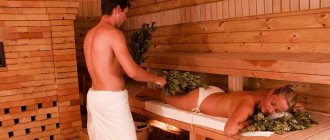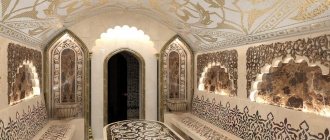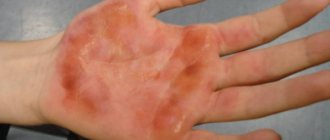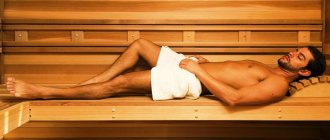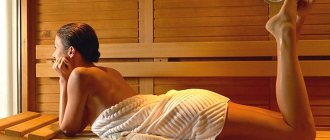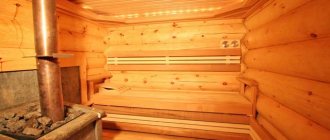The traditional Turkish bath "Hamam" is highly respected throughout the world. The special therapeutic effect and unique ritual of taking the procedures cannot be compared with anything else. What features made the oriental bath so popular?
The first thing that distinguishes a “hamam” from a Russian bath is low temperatures. Maximum 30–50°C at 100 percent humidity. This feature attracts those who, for medical reasons, cannot tolerate high temperatures. High humidity, which does not overload the body, also has a positive effect.
The microclimate created by such indicators allows you to more carefully cleanse the skin, completely opening the pores and saturating it with moisture. In addition to the cosmetic effect, it has a healing effect on the entire body. There is no need to cook and steam brooms, because the individual combination of bath procedures in the “hamam” allows you to experience an incomparable feeling of bliss.
What is a hammam: differences from a traditional bath
Hamam is the name given to public baths in the Middle East (Turkey, Azerbaijan, Iran, Afghanistan and some countries of Central Asia). These peoples have been developing the Eastern tradition of visiting the Turkish hammam for centuries. The benefits of visiting such establishments in Russia are questioned. Often local entrepreneurs offer only a name from a traditional Turkish bath.
There are several features of a real Turkish hammam:
- Temperature from 35 to 50 degrees.
- Air humidity 90-100%.
Despite the fact that you can learn the technique of the original Turkish bath in any Turkish village, Russian entrepreneurs do everything at random, endangering the health of visitors. A real Turkish hammam has benefits for the body only if traditional indicators are adhered to: 100% air humidity at a temperature range of 35 to 50 degrees. Thanks to these parameters, a unique microclimate is created that allows you to visit the hammam with benefit and safety.
The Arab writer Yusuf Abdalhadi said: “Whoever has committed many sins, let him build a bathhouse to wash them away.”
The difference between a hammam and a Russian bath
To experience all the benefits of this establishment, you need to know how to visit the hammam correctly.
It is very important to evaluate in advance all the benefits of Russian and Turkish baths, to find out what the health benefits and effects of each of them are. It’s worth saying right away that the differences between these two types of baths are visible to the naked eye. If a Russian steam room is always decorated with wood, then a Turkish hammam is always decorated with marble. In the east, it is customary to create the most acceptable conditions for comfortable accommodation of guests and take care of their comfort. But the differences don't end there.
The main difference between a hammam and a Finnish sauna is the temperature and the presence/absence of constant wet steam. There is also steam in the sauna, since a ladle of water is periodically tipped onto the heater stove, but it quickly evaporates, and the process itself is not key and is repeated infrequently.
What is the benefit
The main advantage of the Turkish traditional bath is the low, comfortable air temperature, which is not capable of harming the body. The benefits of a Turkish sauna will not be long in coming: usually visitors feel an improvement in their health the very next day. Among the many beneficial properties, we have compiled a list of the main healing effects of visiting the hammam:
- Stabilization of blood pressure.
- Accelerates metabolic processes, which is useful for those losing weight.
- Improves cerebral blood microcirculation, improves psychological state, relieves stress and depression.
- Relaxes muscles, removes stagnant processes in the body.
- Removes toxins and other harmful substances through the pores.
- Removes acne and protects against acne. Accelerates the recovery processes of the skin, rejuvenates the skin.
Turks spend from 30 minutes to several hours in steam rooms without much concern. The entire range of beneficial effects of a medium-temperature sauna probably cannot be included in one article. The carriers of Turkish culture themselves highlight the special effect of the hammam bath on the rejuvenation of the skin, blood vessels, nervous and respiratory systems, and joints.
Skin rejuvenation
Like Russian or Finnish baths, Turkish baths have a beneficial effect on almost all body systems. Ham will be especially useful for women.
Traditional Turkish bath
The procedures perfectly cleanse pores, normalize the activity of the sebaceous glands, moisturize and tighten the facial skin.
Due to its beneficial effects on external organs, hammam has a rejuvenating effect. Turkish baths can be considered one of the cosmetic procedures. Steam softens the skin, cleanses oily skin of the face and entire body. Sebum secretion is normalized, oxidative processes are enhanced, and the removal of accumulated toxins is accelerated.
Blood circulation improves
Under the influence of steam from a Turkish sauna, stagnation is eliminated. The vessels and subcutaneous capillaries of the face dilate. Due to the dilation of blood vessels, blood flow from internal organs improves. The heart and blood vessels become toned. Good blood circulation accelerates the absorption of nutrients from foods, ensures brain performance, and regulates all body systems.
Heal your nerves
A visit to the Turkish hammam has a positive effect on your psycho-emotional state. The relaxing properties of the procedures are difficult to overestimate; both body and soul rest here.
modern hammam
Regularly spending time in the Turkish sauna strengthens the nervous system, anxiety and insomnia go away, and a good mood appears.
If you are worried about a headache, then hammam is an excellent way out of the situation. Based on reviews on forums, you can read opinions that hammam will help cope even with migraines. It is especially useful to attend procedures for people suffering from insomnia - after visiting the hammam in the evening, you will fall asleep without problems.
For the respiratory tract
With 100% humidity, breathing in a Turkish bath is easy; the temperature allows you to breathe freely. A visit to the hammam will be useful for people suffering from frequent bronchitis, during seasonal ARVI and influenza diseases. Prolonged warming of the body and respiratory tract due to warm steam improves immunity and strengthens the upper respiratory organs.
Expert review
Hammam will be useful for chronic bronchitis, wet or dry cough. We especially often recommend visiting the bathhouse for smoker’s cough and other ENT diseases, excluding periods of exacerbation. You should not attend such procedures during periods of exacerbation of respiratory system ailments. The harm from such procedures in this case is unpredictable.
For sore joints
Often, hammam is used to reduce pain in arthritis, rheumatism and osteochondrosis. Almost all types of joint diseases can be treated symptomatically. Reviews say that hammam is useful for muscle strains. After hard physical labor or exercise, the hammam will prevent pain in the muscles.
The benefits and harms of Turkish hamam
Everyone knows and loves the traditional Russian bathhouse. The Turkish bath also has quite a following. What are the benefits and harms of a hammam bath? This question is relevant for those who are just planning to visit the eastern steam room. It is also interesting for those who have already experienced all the delights of wet steam and a pleasant time in the hammam.
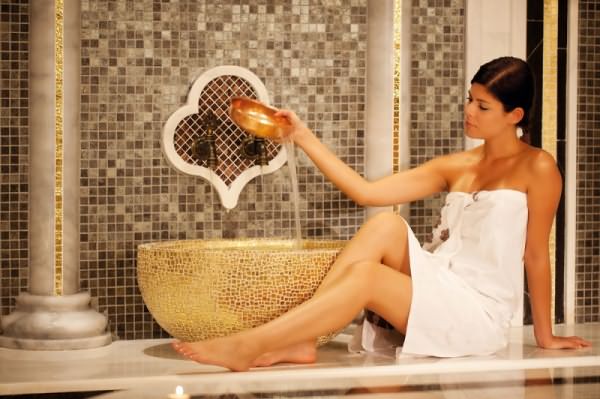
Features of the Turkish bath
What is the fundamental difference between a hammam and other types of baths and saunas? In its delicate and gentle effect on the human body. Of all types of baths, Turkish baths are the most gentle. In any case, many people think so. There are no very high temperatures or sudden changes here, as, for example, in a Russian steam room. Taking bath procedures in a Turkish hammam is gentle and calm. The temperature in the steam room ranges from 30 to 65°C. True, humidity can reach 100%, but at fairly moderate temperatures for bath procedures it is easily tolerated.
In Turkey, it is customary to spend the whole day in the national bath - from morning to evening. And this tradition has a long history. The bathhouse has become for Eastern men and women something like a place of communication, a club of interests and a spa. If a man does not allow his wife to visit the hammam, she can even file for divorce, and the reason will be considered valid.
Thanks to the undoubted benefits of the oriental bath, its popularity is gaining momentum among many peoples of the world, including in our country. Many Russians prefer to get pleasure for body and soul in a Turkish hammam.
The combination of relatively low temperature and high humidity and the absence of contrasts are the key to careful and high-quality bath procedures. The main hall is designed in such a way that the temperature at the walls and in the center is different. Therefore, finding your “climate zone” is not difficult for any person. You can also gradually warm up and cool down the body, moving from one place to another. And for a comfortable stay and uniform heating of the whole body, the Turkish sauna is equipped with marble beds.
Advice from the master!
Oriental spa treatments greatly increase the benefits of hammam.
We are talking about all kinds of massages, the use of oils, scrubs, masks and creams based on natural ingredients. Even the soap in a Turkish bath consists of certain types of oils and olives. The combination of useful and pleasant makes staying in such a place an unforgettable vacation.
The healing effects of hammam and contraindications
The hammam bath has many positive effects on the human body. So, what are the benefits of hammam:
- gently warms the whole body, relaxes muscles, removes lactic acid;
- cleanses pores and glands, exfoliates dead and dead cells;
- prevents congestion in the circulatory system, pelvic organs and abdominal cavity;
- tones the heart and blood vessels;
- improves blood microcirculation;
- accelerates the breakdown of adipose tissue and promotes metabolic processes;
- relieves stress and psycho-emotional tension;
- normalizes respiratory processes.
Based on the above, we conclude: the benefits of hamam are very great. Both for health and beauty, this is perhaps the best bathhouse of all known. It is not without reason that the Turkish bath is increasingly spreading throughout the world, gaining new admirers.
However, the hammam bathhouse also has contraindications. You need to know them so that instead of the expected positive result you do not harm your body. So, in what cases should you not take an oriental bath:
- During pregnancy. Any overheating of expectant mothers can negatively affect the child.
- For severe respiratory diseases such as asthma, tuberculosis, etc.
- For diseases of the cardiovascular system.
- For skin diseases. Dermatoses, fungal infections and other dermatological problems can progress from exposure to high humidity and elevated temperatures.
- During acute inflammatory processes. Overheating in these cases is very dangerous.
Advice from the master!
The presence of chronic diseases can also be a contraindication, so it is better to consult a doctor about whether visiting an oriental bath will benefit or harm the body. In all other cases, it will bring maximum health and pleasure.
poparimsya.com>
How often can you visit the hammam?
The optimal number of visits to procedures in the Turkish hammam is considered to be 2-3 times a week. The healing effect will be noticeable even if you go to the Turkish bath only once a week. But if you attend procedures more than three times a week, you can get harm instead of benefit. It is not recommended to steam more often as this can lead to depression of the nervous system and dehydration.
In Turkey itself, hammams are extremely popular. In Istanbul alone there are more than a hundred of them; in the provinces they can be found in even the most remote village. In some places, bathhouses from 200-300 years ago have been preserved. The procedure of washing in hamams has been used in the Middle East for more than a thousand years.
It is difficult to determine the optimal amount of time spent in the hammam in one session. It can be argued that if you follow the Turkish technology, the bath is useful for 15-45 minutes. However, this issue has not been studied anywhere; according to reviews from frequent guests of hammams, you can sit in the steam room for more than an hour without harm to your health. At the same time, it is necessary to constantly monitor your well-being.
The harm that hamam can cause
People at the stage of exacerbation of any chronic diseases should be careful about visiting Turkish baths or refuse altogether. And with problems like:
- Inflammatory processes of the skin.
- Epilepsy.
- Tuberculosis, asthma.
- Some eye diseases.
- Oncological diseases.
- Hypertension.
- Serious diseases of the cardiovascular system.
- Any fungal diseases.
- Pregnancy.
- Mental illnesses.
You can and should visit the hammam once or twice a week. Then it will bring tangible benefits.
If you go to extremes and go there every day, then instead of doing good, you can harm yourself.
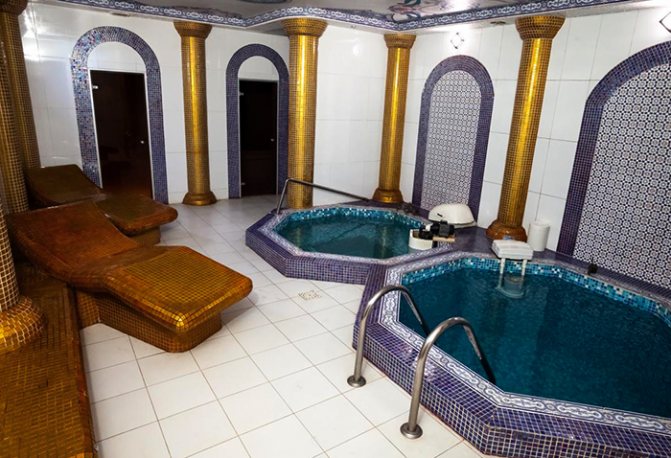
Harm and contraindications
Many people are wary of hamam, not understanding what benefits and harm such procedures can bring. It is worth noting that visiting a Turkish bath is safer compared to a Russian or Finnish sauna. The temperature allows you to breathe easily in the room and does not put unnecessary stress on the body. However, it is worth noting that in some conditions it can be harmful.
Thus, hammam is useful for frequent bronchitis, but is contraindicated for severe bronchial asthma. Improved blood circulation is achieved through vasodilation, so procedures are contraindicated for varicose veins. Experts identify a number of other contraindications that can cause harm:
- Kidney inflammation.
- Chronic latent psychoneurological diseases (epilepsy).
- Oncological diseases.
- Hypertension, tachycardia and other heart diseases.
- Varicose veins
If you have not found any problems associated with contraindications, you should not mindlessly spend a lot of time in the hammam. To avoid harm, it is necessary to constantly listen to the body's reaction to increased temperature. If you feel unwell, you must immediately leave the steam room, drink a glass of water at room temperature, and wipe your face with a damp towel.
Hammam has long been famous for its beneficial properties. But is there any harm from a Turkish bath and how often can you visit it? We will tell you about all the benefits and harms of hammam in this article!
Fans of the Russian bath have an alternative - the Turkish hammam, which in translation means blooming steam. In its traditional design, it is a spacious room with marble cladding and 5 niches with different degrees. The temperature in them does not rise above + 45°C. Moving from section to section, everyone can choose a mode that is comfortable for themselves.
Which sauna is the healthiest in your opinion?
What kind of steam room did the Finns give?
The difference between a Finnish sauna, a Russian bath and a Turkish hammam is that the steam is not used for its intended purpose. The air in the sauna is dry, the temperature is about 100–110°C. Often lovers of super-hot conditions prefer to heat the sauna to 130°C. Excessive heating of the air causes increased sweating.
To cool down after the steam room, it is customary to dive from the pool, which should be built in every sauna. If the steam room is located on the banks of a river or lake, lovers of high-temperature procedures after steaming dive into the abyss of natural waters.
We invite you to read: How to correctly install rafters on a gable roof
Steam sessions are accompanied by constant lying on a shelf, inhaling the aromas of pine needles. Reduced humidity helps to cope with discomfort associated with arthritis, rheumatism, osteochondrosis, and radiculitis. Strong heating with dry air reduces the inflammatory process. For most people, the dry, hot air of a sauna is easier to tolerate than the humid microclimate of a sauna.
Bath etiquette
This option is suitable for those who like to relax and feel the beneficial effects of air scented with herbs and essential oils. In such conditions, oriental women love to engage in spa treatments and have leisurely conversations. Traditionally, they spend the whole day in the bathhouse, but a couple of hours is enough for hygiene procedures and relaxation. To get maximum benefit, it is important:
- Do not hurry;
- Follow the rules;
- Do not break the sequence of steps.
Before visiting the steam room, first enter a room with a temperature of + 35°C. Staying in a warm dressing room prepares the heart for thermal stress. After adaptation, they go to the hararet - the washing room. In the round marble hall in the middle there is a gobektashi (belly stone), on which procedures are performed. Below it in the basement there is a firebox with a boiler, from where steam is supplied through pipes.
Enjoy Your Bath!
Lying on a heated stone, it is easy to forget about chronic fatigue and everyday problems. No need here:
- Give in to the heat;
- Torture the body with a broom;
- Cool off periodically in the pool.
A visit to the steam room comes down to one goal - to sit on a towel and sweat heavily. After 10 minutes, sweat flows in streams, and because of the veil of thick steam, it is impossible to distinguish objects half a meter away. After a quarter of an hour, the relaxed body is ready for bath procedures.
A professional massage and a cloud of soap foam will help you feel bliss. First, the dexterous hands of the bathhouse attendant knead each joint until it crunches. Not only the arms are used, but also the legs. Classic Turkish massage involves kneading the prone body with the soles of your feet. After the execution, rest is required. Then the bath master puts on a kise mitten woven from horsehair or hard fibers and literally removes the skin in layers.
The bathhouse attendant dilutes olive soap in a mesh bag and squeezes a mountain of snow foam onto the body. Gently rubs the skin and at the last moment pours ice water over it. Instead of a soap massage, you can choose a classic or lymphatic drainage massage. After the procedures, the body becomes weightless. The feeling of lightness and pleasant sensations are worth subjecting it to “torture”.
Treatments for rejuvenation
It’s just the right time to apply nourishing products to pristinely clean skin, instantly penetrating through open pores into the deep layers of the dermis. It is not forbidden to carry out:
- Massage with coconut oil;
- Rub in the honey-vitamin mixture;
- Wrap with Moroccan clay, chocolate, seaweed.
Select procedures from the list or limit yourself to applying peach, grape seed, or olive oil.
Treatments in the hammam are not only pleasant, but also useful for rejuvenation and health promotion.
- Decay products and salts are removed from the open pores along with moisture.
- Tissues and blood are saturated with oxygen.
- Cell division and blood flow increase.
- The keratinized cells of the epidermis are removed.
- The skin texture is evened out.
Oriental sauna for weight loss
Nutritionists say that the steam room is one of the best remedies against cellulite and fat deposits. Hot air accelerates lymph flow and blood, which helps fight subcutaneous deposits. The optimal effect is achieved by combining diet and spa treatments - anti-cellulite massage, mud or algae wraps. The algorithm of actions is as follows:
- To improve oxygen supply and penetration of nutritional components, steamed skin is cleansed with peeling. The following abrasives are used: salt, coffee or a special product with fruit acids.
- The body is rubbed with handmade soap with anti-cellulite components - essential oils, Dead Sea minerals, olive oil and peeling is performed.
- The active substance is distributed onto the thighs, buttocks, and thighs. The body is then wrapped in film .
What do you choose for wraps?
To eliminate orange peel, applications with green coffee, berry extracts, kelp, coconut oil, special gels and creams are effective.
- Coffee promotes the breakdown of fat and accelerates cell renewal.
- Vitamin-mineral complex with brown algae nourishes and tightens the skin.
- Creams are not able to get rid of subcutaneous fat, but they have a lifting effect and even out the texture.
Ideally, a bandage wrap with gel impregnation is used, which activates drainage in the subcutaneous matrix. After 30 minutes, the applications are removed. The temperature of a heated body decreases gradually. To tighten the pores, pour cold water on yourself or jump into the pool. In one session, up to 3 cm of volume is lost.
How often should you go to the hammam?
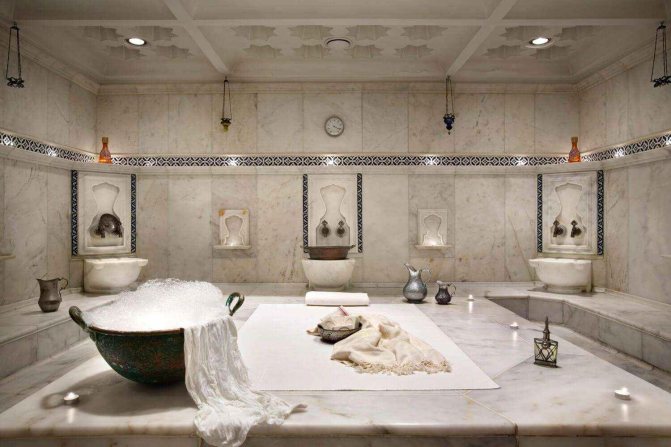
I want to visit this piece of paradise often. Turkish women do not deny themselves pleasure and find a reason to spend quality time once a week. There are no restrictions for experienced steamers, but one visit per week is enough for beginners. After a month you can increase it up to 2 times. If you wash in the bathhouse more often, the therapeutic effect will decrease.
Benefit
Despite the high humidity, due to the low temperature and soft steam, you can breathe deeply. A visit to a Turkish bath will help with ARVI, nasal congestion, and persistent cough. The procedures strengthen the immune system and allow you to forget:
- About a cold;
- Sore throat, laryngitis;
- Diseases of the respiratory system, except asthma;
- Joint pain due to arthritis, rheumatism, gout, radiculitis;
- Neurosis, melancholy;
- Chronic fatigue;
- Muscle pain after sports training and injuries.
Regular visits to the hammam will stop the development of hypertension in the initial stage.
Contraindications
In some cases, visiting the oriental bathhouse is prohibited. It is worth refusing in case of exacerbation of acne, after laser resurfacing, chemical peeling. Fungal infections, eczema, and rosacea worsen in a warm and humid environment. Procedure not shown:
- For oncology;
- Liver problems:
- Cardiac ischemia;
- Hypertension;
- Pathologies of the thyroid gland;
- For cataracts;
- After a stroke.
Temperature and steam put stress on the kidneys. At the first symptoms of discomfort, they move to the waiting room or lobby.
Can pregnant women steam?
Gynecologists agree that visiting a steam room is dangerous only in the early stages. The ban is due to the fact that with an unformed placenta, there is a high risk of miscarriage. In the second semester, expectant mothers can indulge in the pleasure of sitting in the hararet with light steam and pampering their skin and hair with masks and oils.
In the last 3 months before giving birth, many try not to take risks. If the pregnancy proceeds without complications, relaxation will not cause harm. It is better to refuse visits in the last month. Heating and sudden cooling of the body causes redistribution of blood. This can cause premature release of water. You don’t have to go to Turkey to pamper yourself with the procedure. Most bath complexes offer you the opportunity to enjoy soft steam in SPA centers of the city.
It has long been known that hot steam has a beneficial effect on the human body. Therefore, different countries use a special method of vaping.
In Russia it is a bathhouse, in Japan it is an ofuro, in Finland it is a sauna, and in Turkey it is a hammam. Moreover, the latter is in great demand all over the world, including the CIS countries.
The Turkish bath has gained popularity thanks to its pleasant procedures and gentle steam temperature, which allows those people who were previously contraindicated from using a sauna to visit it. However, many are still not familiar with this type of procedure, so they ask the question: what is hammam and how is it useful?
The Turkish sauna is a special type of steam room. Its main difference from a Russian bath or Finnish sauna is a lower temperature with 100% humidity.
All this makes the procedure gentle. After all, the temperature in the hammam does not exceed 65 degrees and is well tolerated by people for whom a regular steam room is not suitable.
Maximum humidity allows a person to not experience difficulty breathing during a visit to the steam room, even at high temperatures. And thanks to the special design of the oriental bath, the body warms up gradually.
Special marble beds also add comfort to the procedure. The stone benches heat up evenly and then maintain the same temperature level.
A true Turkish saguin has several rooms. In each room the steam temperature changes:
- Tepidarium – located in a humid room with a temperature range of up to 36 degrees. This is where the body acclimatizes.
- Calidarium - in the second hall the temperature reaches 45 °C. The action of steam promotes intense sweat production, which cleanses the skin.
- Frigidarium – in the last room the temperature is 30 degrees. In this room there is a pool with water heated to 28 °C. After dipping into the cool liquid, the steamed pores close and have a tonic effect on the body.
Often, after cleansing the skin, a person is given a relaxing foam and oil massage. The visitor can then go to the first room to relax. Here he is offered aromatic and healthy herbal tea.
First of all, the Turkish sauna is beneficial for the skin. The steam gently cleanses pores and removes impurities and toxins.
The procedure allows you to normalize the functioning of the sebaceous glands, improve blood circulation and moisturize the dry epidermis. If you regularly visit the hammam, your face will acquire a beautiful peach tint and a slight lifting effect will be achieved.
All these advantages make the Turkish sauna a favorite place for every woman. In addition to improving the condition of the skin, the fair sex visits the bathhouse to get rid of nervous tension and improve sleep.
Hamam is also useful for women because it improves hair growth and strengthens hair follicles. And if desired, your stay in the steam room can be completed with a set of therapeutic and relaxing procedures:
It is noteworthy that the Turkish sauna can rejuvenate all organs. A similar effect is achieved by stimulating metabolic, oxidative processes and cleansing the body of toxins.
What are the benefits of a Turkish bath (hamam) for men? Representatives of the stronger sex more often than women suffer from diseases of the genitourinary system.
The special conditions and moist heat of the eastern steam room cause intense sweating. This process helps cleanse the kidneys and relieve painful symptoms.
It is useful to visit hammam for diseases of the respiratory organs. The eastern steam room will help strengthen the immune system, cleanse the bronchi, lungs and reduce the likelihood of developing rhinitis and ARVI.
The eastern steam room stimulates blood circulation and removes stagnant processes. Steam dilates blood vessels and promotes blood outflow.
Reviews from many visitors to the hammam are unanimous that the Turkish sauna lifts the mood and calms the nerves. After visiting the steam room, a number of positive effects are noted:
- headache goes away;
- thoughts are cleared;
- anxiety is eliminated;
- a feeling of peace appears;
- insomnia goes away.
People who regularly visit the hammam improve the condition of their muscular and joint systems. The steam room helps reduce pain symptoms from rheumatism, osteochondrosis and muscle strain.
People often go to the hammam after visiting the gym. The steam room helps eliminate muscle spasms, relax ligaments and joints.
But, coming to the Turkish bath immediately after training, when the pulse and blood pressure have not returned to normal, can cause harm to the body. It is correct to visit the steam room 30 minutes after the end of classes.
There are a number of recommendations that should be followed in order not to harm your health when visiting the hammam. The first piece of advice is that 2 hours before the procedure you should not eat heavy food or drink strong or caffeinated drinks.
In a Turkish sauna, it is customary to steam while lying down. Therefore, before you sit down on a marble bench, you need to cover it with a towel and make sure that your feet are higher than your head.
Doctors do not recommend making sudden movements in the sauna. This is dangerous for heated muscles, which are easily damaged in this state.
In case of overheating, you should drink herbal tea or a glass of clean water. Also, visitors to the hammam should know that they cannot walk in a Turkish sauna without clothes.
How often can you visit a Turkish bath? Some go there every three days, while for others once a month is enough.
The opinion of doctors on how many times you can sit in the hammam is unanimous. Experts say that everything depends on the person’s health status and strict adherence to visiting rules.
Experts say that it will be enough for an ordinary person to go to a Turkish sauna once a week. This will keep your skin clear and muscles flexible.
Sauna or hammam, which is healthier? In a Finnish steam room the temperature is 90-120 degrees, and in a Turkish steam room it is 35-65 C. Regarding humidity, in the first it reaches 15%, and in the second it is about 100%.
Experts say that sauna and hammam have different effects on the body. Therefore, it is possible to determine which type of steam room will be better only based on the individual characteristics of the person.
The Finnish sauna is suitable for people with a strong cardiovascular system and respiratory organs, as it is difficult to breathe in it.
The sauna will be useful for those who do not tolerate humidity well, want to remove toxins from the body and cleanse the pores well. It quickly restores performance, relieves stress, strengthens the immune system and nervous system.
The hammam, in comparison with the Finnish sauna, does not dry out, but moisturizes the epidermis, which is suitable for those with dry sensitive skin and allergy sufferers.
A Turkish bath opens pores better, which is more effective from a cosmetological point of view. Hamam also has a more gentle effect on the heart and blood vessels.
The benefits of Turkish hammam, which are invaluable, can be harmful to health in the presence of a number of diseases and conditions. Thus, it is forbidden to visit the oriental sauna if you are intoxicated. If you go to the bathhouse after drinking alcohol, the body experiences a double load, which will lead to adverse consequences.
It is not recommended for children under 12 years of age and older people to go to the steam room. Also, going to the hammam can be harmful for people with high fever and viral diseases.
Doctors prohibit visiting a Turkish bath if you have cancer. Such patients have increased blood circulation, and the sauna doubles this effect, which leads to the spread of microtoxins and tumor particles.
Visiting the hammam can be harmful for people with mental disorders. In case of psychosis, neurosis and other problems of the nervous system, aggression may increase during the procedure due to a change in the microclimate.
Other contraindications to visiting a Turkish bath:
- acute inflammatory diseases of the respiratory system (asthma, tuberculosis);
- disturbances in the functioning of blood vessels and the heart;
- pregnancy;
- any diseases accompanied by inflammatory processes;
- varicose veins;
- malfunction of the thyroid gland;
- fungal infections;
- dermatoses;
- epilepsy;
- hypertension.
For many centuries, hammam has been a favorite pastime for eastern residents. But in the last few decades, the Turkish bath has become popular in Russia, thanks to its low, gentle air temperature and pleasant procedures. But many people still look at the oriental steam room with apprehension: what exactly are the health benefits and harms of a Turkish bath? Who should not visit it, and how should a vacation actually take place there? We will be happy to answer you!
What is included in the ceremony of visiting the hamam
If you come to a Russian bathhouse, first of all, you will be thoroughly whipped with a broom, allowed to breathe steam from herbal infusions, and then treated to delicious tea. The Turkish bath also has its own visiting traditions. Without them, the pleasure of the hammam will be incomplete.
Turkish bath ceremony: 7 steps for impeccable beauty and good health
1. The hammam has three rooms into which the visitor enters in turn. The first is the tepidarium. Here the body adapts to the saturated humid air and temperature in the steam room, so in the tepidarium it is low - only 36 degrees. They spend only 10-15 minutes here, and then, if they feel well, they move on.
2. Then the guest goes to the calidarium. Here the temperature is already higher, reaching 45 degrees. Under the influence of temperature in the calidarium, the pores of the body actively begin to open and cleanse. There are also marble loungers where the visitor is placed with his back up.
3. For about 30 minutes he just lies there, warming up and preparing for further procedures. He is then given a thirty minute soapy massage. It is made with a special bag called “kopuk torbasi”. The master puts a special “black soap” into it, which is made from a mixture of oils (olive, peach and argan). The massage therapist in the hammam covers the visitor’s entire body with this foam.
Then the foam is washed off and it’s time to massage using a hard “kessa” goat hair glove. The master carefully works out every part of the body - from the tips of the toes to the top of the head!
4. The massage may feel too intense as the skin may feel like it is on fire. However, after it there will be a relaxing effect, after which it will seem that the energy in the body has increased a hundredfold!
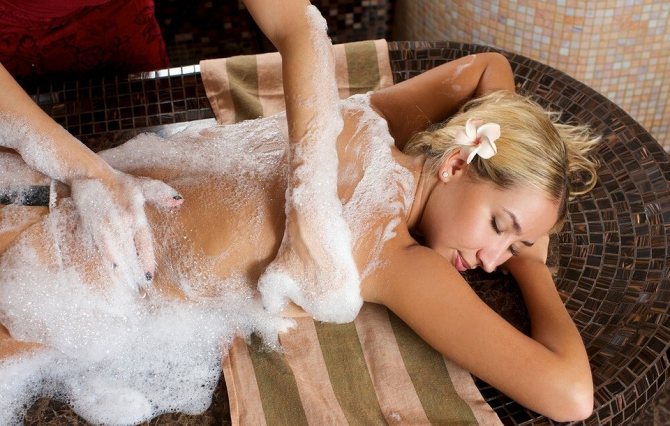
5. After a massage in the hammam, be sure to do a body wrap. You can choose from clay, honey, chocolate and other types. While the body is under the influence of the caring components of the wrap, the guest will receive a head massage, hair care using herbal decoctions and infusions, and a face mask.
6. After all beauty procedures, the body is doused with cool water so that after these manipulations, which warm up the body, a pleasant temperature contrast occurs. For these purposes, the hammam also has a pool with cool water. But he is already in another room.
7. The last stage of visiting the hammam is resting in a room called the frigidarium. The temperature here is lower - about 30 degrees. In this room you can take a dip in the cool pool, and then, after drying your body with a cotton sheet, lubricate your skin with a care product and relax after the procedures with a cup of herbal tea.
Is it a Turkish bath?...
Quite a serious question. The fact is that today in Russia the bath business is, of course, developed, but to what extent? As it turns out, those who have personally visited a real Turkish bath say that local hammams resemble it only in appearance - but not in sensation. Absolutely wrong humidity, temperature and special means. And not the same effect at all.
Is it worth saying then how dangerous the impact of such a “hamam” on health can be? After all, the Turks have been developing their bath tradition for centuries, selecting the optimal temperature and humidity conditions down to the degree, and carefully observing the necessary sequence of all procedures. And therefore all this had a positive effect on health. And a failure in any technology leads to other consequences.
Moreover, modern hammams in Russia offer three modes of procedures at once: something like a sauna with dry and hot air, a supposedly Russian bath with steam and an air temperature of up to 100°C, and a “Turkish” one, with heat up to 60°C and humidity up to 100%, which is also wrong. But all this is proudly called “hammam”.
And finally, today an innovation such as “hamam-plus” is becoming popular. This is the same Turkish bath with marble on the walls, but in which a special cable is used to warm the walls, beds and floor, providing up to 70°C instead of the required 45°C, and dry “Russian” steam.
It’s like combining two in one: both a hammam and a Russian bathhouse. But such an invention is far from a real Turkish steam room, and staying in it can really undermine your health. But an inexperienced person will be sure that he ended up in a hammam!
So let's take a closer look at what a real Turkish bath actually is and what to expect from it.
How to take hamam: the correct sequence of actions
Recently, it has become increasingly popular to place hammams at large sports clubs or fitness centers. Many doubt the advisability of this. Let's try to figure out how effective this is.
The fact is that the classic design of the hammam helps the body recover as much as possible after heavy physical activity. If you learn how to properly visit the hammam after a workout, you will be able to recover quickly. The whole secret is that it is in the Turkish bath that it is possible to achieve the optimal combination of a cold stone surface with hot steam.
This makes it easy to tolerate even fairly high temperatures. That is why a Russian bath or a Finnish sauna, with their very high temperature conditions, can put too much stress on the heart. Because of this, the effect can be negative even in a person who has never experienced such health problems.
If you carefully study how to properly visit the hammam in a fitness club, you will be able to quickly recover from grueling workouts and get rid of aching pain in your joints and muscles. To achieve this effect, it is enough to spend no more than a quarter of an hour in the hammam.
Hamam: a look from the inside
Hamam is the most moisture-rich bathhouse existing in the world. Normal humidity here is considered to be in the range of 80-100%, and this is at a temperature of only 40-45°C.
A real Turkish hammam is a separate building with six rooms: a locker room, a relaxation room, a steam room, a washing room, a massage room and a swimming pool. It is customary to go out of the steam room into the pool, where you first need to swim in hot water, then at a lower temperature, in order to gradually cool down the hot body without any stress on the blood vessels. Of course, this is not Russian fun in the form of diving into a snowdrift after a good broom.
Interestingly, the hammam did not originate in Turkey, but in Rome, where the baths were thermal. But it is worth noting separately the special interior of a true Turkish bath: domed ceilings allow drops of condensation to easily roll onto the floor and evaporate there. And the beautiful stone mosaic in the decoration evenly absorbs thermal radiation and releases it gently. By the way, initially, more useful marble was used in such baths, and therefore, if you are planning to build a hammam yourself, use it.
Now compare a real Turkish bath with most commercial boors outside the city, housed in an ordinary multi-story building, in just three rooms with rectangular ceilings and a heat and humidity regime selected somehow.
A proper Turkish hammam is heated by boilers with boiling water, which are usually located in the walls or even under the floor. The hot water steam goes further into the pipes under the floor and seats, and all surfaces heat up. And through small holes, steam enters the room.
And the main advantage of a Turkish bath is that it warms up not only the air, but also the walls, the floor, and even the sun loungers. Thanks to all this, it is possible to undergo truly pleasant and healing procedures:
- First, the person rinses in the shower or other running water.
- Next, he lies down on a warm lounger and gradually, without stress, warms up the whole body. He lies there for about 20 minutes until the muscles relax and the pores open.
- Now it’s time for peeling: the whole body is rubbed with special hard washcloths, which carefully remove dead dead cells of the body, cleanse open pores and have a healing massage effect. Moreover, the cleansing is quite deep. Many vacationers at this moment are surprised how so much dirt remains on the washcloths, since they have just been in the shower?
- After peeling and another wash (from dirt), it is customary to start soaping. This is not just foam from an ordinary bar of soap - here it is voluminous and airy, and envelops the entire body.
- Further procedures are now carried out by a massage therapist, gently kneading each part of the body. This is the most enjoyable time.
- Then you can wash off the foam and rest.
- And finally, in a proper Turkish bath, after all the procedures, they drink healing herbal teas in a special “keif” room, where they used to smoke hookah (which is why the name of the room seems so familiar).
In addition, in a proper hammam it is customary to move from a less hot room to a hotter one, which is quite consistent with the words of Hippocrates that the effect of heat on the body should be gradual. That is why the traditions of the Turkish bath have the same centuries-old history as the Russian steam room - step by step, that same healing atmosphere was created.
But today, in many Turkish baths, steam is created by a steam generator; marble is sometimes replaced with not the highest quality mosaics, and laid on polystyrene foam panels. Floor areas are heated with water, and even more often - with electricity. And in the end we get a kind of thermos, which, in its filling, is already quite far from a real hammam.
Turkish bath hammam - features, benefits and contraindications
The traditional Turkish bath "Hamam" is highly respected throughout the world. The special therapeutic effect and unique ritual of taking the procedures cannot be compared with anything else. What features made the oriental bath so popular?
The first thing that distinguishes a “hamam” from a Russian bath is low temperatures. Maximum 30–50°C at 100 percent humidity. This feature attracts those who, for medical reasons, cannot tolerate high temperatures. High humidity, which does not overload the body, also has a positive effect.
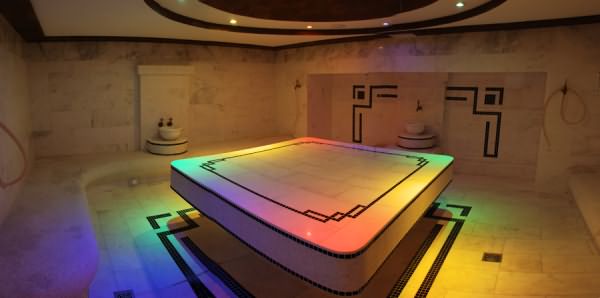
The microclimate created by such indicators allows you to more carefully cleanse the skin, completely opening the pores and saturating it with moisture. In addition to the cosmetic effect, it has a healing effect on the entire body. There is no need to cook and steam brooms, because the individual combination of bath procedures in the “hamam” allows you to experience an incomparable feeling of bliss.
The origins of the ancient tradition
Baths appeared in Turkey at the beginning of the 7th century. According to historical data, a special culture of ablution was adopted from the Arabs, who borrowed technology from the ancient Romans. According to the research of historians, the Roman baths served as the prototype for the hammam.
Baths began to gain popularity with the advent of Islam in eastern countries. There have been cases where ancient temples of other religions were converted into “hammams”. The premises were completely refurbished according to multi-stage procedures, and the thermal baths were improved for individual bathing in the Turkish style.
According to historians, at first there was nothing unusual in the hammam. Bath traditions have taken root over the years. For example, the steam room has become a kind of place for massage. This was not the case in Roman baths. The dry steam room was converted into a “sweating room.”
Along with other types of baths, modern prototypes of Turkish temples of purity in Russia are a kind of clone. You can truly experience all the charm only in Istanbul or Bukhara - in these cities the classic “hamams” are still preserved. Despite their long history, the owners of bathhouses are in no hurry to remodel them, leaving everything unchanged.
Classic bath treatments
In the traditional old style, the hammam is one large building with many rooms and utility rooms. Heating is provided by a large boiler with water, built into the wall or located in the underground space.
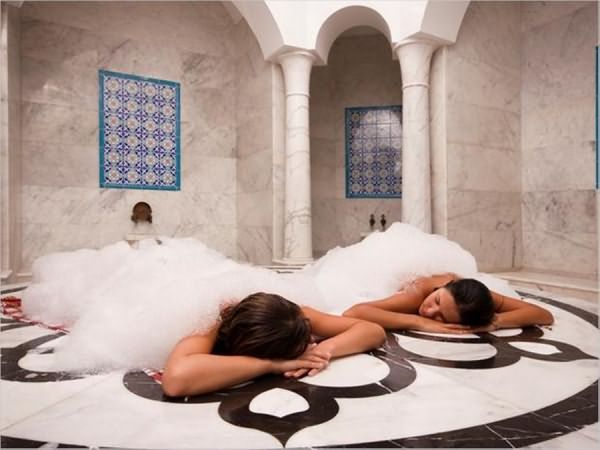
In steam rooms, special holes are located in the walls at a height of about one and a half meters to supply hot air. The proximity of the boiler to the steam room and the passage of the pipe under the floor to supply heated steam create special conditions inside. It is simply impossible to walk on the floor barefoot.
In the classic version, the hammam is built in the shape of a human hand. All sizes of bath rooms are optimal and thought out in ancient times. The center is the steam room (palm). Around it are five separate rooms, symbolizing the number of fingers. The entrance (hand) is the waiting room. Here the temperature does not exceed 35°C. At the entrance you can sit, warm up a little and prepare your body for the sacred ritual.
A steam room in a Turkish bath is always a spacious room, in the center of which there is a lounger made of Chebek-Tashi marble. Literally translated into Russian - a bed for the stomach. Accordingly, you need to rest on it with your back up. According to ancient legends, marble has a sacred power that allows, under the influence of high temperatures, to heal minor ailments in the body, namely in the intestinal tract.
From the steam room, as mentioned above, five corridors lead to other rooms, with different temperatures. By visiting each one in turn, a certain load is created on the body, which helps remove toxins. As you walk through the corridors, you get the impression that there is an electric floor heating system throughout the entire area. But that's not true. Heating is carried out through a properly positioned heating boiler.
According to legend, after going through all the rooms, the body is completely cleansed. After this, you need to go back to the steam room and enjoy a traditional massage performed by oriental masters. At first glance, the procedure may seem to the visitor to be a kind of beating of the victim. This is what many people think when visiting the hammam for the first time. But from the satisfied faces of the “victim” one can understand that this is absolutely not the case. And no wonder - a real Turkish massage perfectly relieves not only fatigue, but also clears the mind and invigorates the entire body.
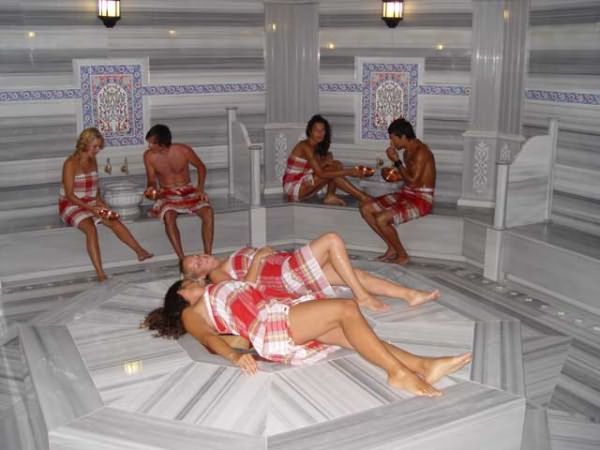
At the end of the massage, visitors are offered to wash themselves with a hard washcloth and swim in three pools with different temperatures. This method of ablution was adopted from the Roman baths, and remained unchanged in the Turkish bath.
A modern take on the Turkish bath
Today's “hammam” is far from the same procedures that were carried out in the old days. Even in most resort towns, nothing remains of the former tradition. Steam generators for baths, masked by interior decoration, are used to increase temperatures.
This is largely due to the fact that public ablution (and the hammam is considered just such a bath) has today lost its relevance in Arab countries. Short-sighted tourists are content with what they have. And today, for the most part, small saunas are built. Because such a grandiose structure as a Turkish “hamam” is simply impossible to build on the site.
But in recent years in Russia there has been a tendency towards a revival of the idea. Modern hammams have changed somewhat. Services for taking a bath in a Turkish-style bath are offered by various sanatoriums and health centers.
Modern steam room in oriental style
Turkish hammams today consist of only three rooms. So the engineers simplified the construction work and removed the global issue of choosing the material. In ancient times these were completely stone structures. Today, it is a standard brick, with original interior decoration in an oriental style.
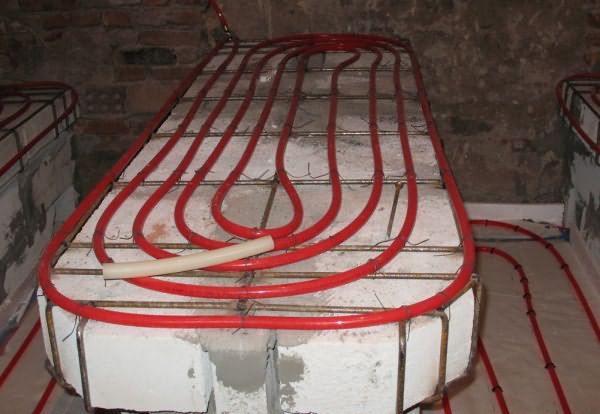
The first is the locker room (Jamekian). Unlike the waiting room, you can still take a shower here. Next comes the steam room (hararet). Sacred place for taking hot baths. After steaming, when the pores of the skin open, it is suggested to undergo a bathing procedure using a coarse washcloth made of goat hair. Rubbing alternates with rinsing with warm water. After this, the visitor is taken to the third room (soguklyuk), where lower temperatures cool the body, allowing it to recover after exertion.
Despite significant architectural changes in relation to the classic Turkish “hamam”, the finishing materials and configuration of the premises are maintained in traditional styles. The interior decoration is made exclusively of natural stone. The hammam has never been finished with wood.
The interior is always in oriental style. Moreover, he can be deliberately rude or clearly strict. Particular attention is paid to lighting in the bathhouse. Lamps must not only match the architecture, but also be safe.
The ceiling in the steam room deserves special attention. This is a kind of architectural chic in design. Firstly, it is made in a dome-shaped style, and secondly, its height must be at least 3 meters. This is not so much a fashion statement as a practical recommendation. Condensing moisture will not drip onto the floor, but will flow down the rounded walls into the drainage system.
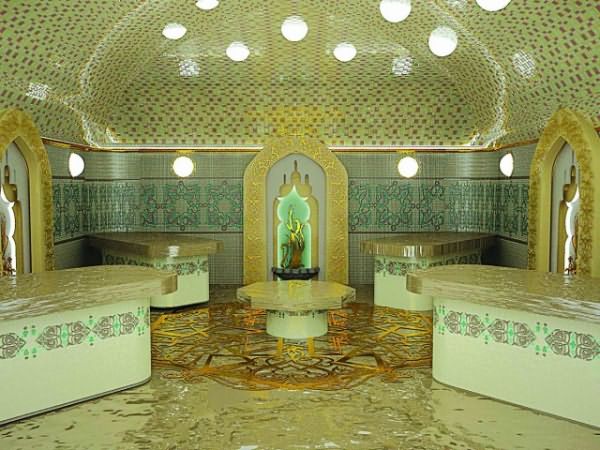
How is hammam useful?
Like other baths of different nations, ablution procedures in the Turkish “hamam” bring certain benefits to the body. Moist and especially soft steam has a beneficial effect on the nervous system, improves sleep and reduces the likelihood of headaches, relieves nervousness and anxiety. The overall tone of the body increases. The person becomes cheerful. The procedures have a positive effect on improving metabolism and have a rejuvenating effect on the skin.
Contraindications
There is also a certain risk group, as in other baths. But thanks to the soft, moist steam, in contrast to the dry steam produced by a stove, there are fewer contraindications for hammam. Therefore, the procedures are not contraindicated even for those who are deprived of the joy of visiting a Russian bath or Finnish sauna with higher temperatures. The risk group includes the following diseases:
- inflammatory processes of internal organs (at the active stage);
- oncology;
- cardiovascular diseases.
Despite the presence of contraindications, these are minimal restrictions in relation to other types of baths, and the benefits of “hamam” have been proven at the medical level. Therefore, if possible, visit a Turkish bath and enjoy the delights of oriental ablution rituals.
Also look at the features of Japanese baths.
proekt-banya.ru>
Benefits of visiting the hamam
Even if you have visited the hammam only once in your life, you will definitely remember this vacation. In addition to feeling incredibly clean, the very next day you will feel much better. And all because a real Turkish bath:
- Deeply cleanses all pores and removes toxins.
- It has a rejuvenating effect on both the skin and the entire body.
- Thanks to prolonged heating, we strengthen the immune system.
- It has a beneficial effect on the nervous system, normalizes sleep and mood.
- Accelerates skin regeneration.
- Improves metabolism and helps you lose weight faster.
- Eliminates salt deposits.
- Stabilizes blood pressure.
- Cures chronic colds.
- Eliminates muscle tone and tension, which is especially valuable for athletes.
- Relieves stress and improves blood microcirculation in the brain.
- Eliminates stagnant processes in all organs.
Thanks to the soft and healing microclimate of the hammam, it is useful to spend several hours in it!
Have you already noticed why the illustration above shows only women? The fact is that hammam is popular precisely among the fair half of humanity, while men prefer the Russian bathhouse with its “tangible” procedures. But in Turkey, a woman of any status has the right to file for divorce if her husband does not allow her to go to the hammam.
And if you also take into account that Turkish women have never had much other entertainment (until today), then it is not surprising why the hammam has become an entire art over the centuries. “She’s fussing around like a Turkish woman getting ready for a bath” - that’s what they once said in Rus'. After all, in order to carry out bath procedures according to all the rules, women had to prepare from 15 to 20 items with them!
Although there are exceptions and adherents of the Turkish steam room. But, as practice shows, they often build one on their own site, to be away from women’s “sabbaths” in city hammams. They decorate it with marble and stone, according to all the rules, but they still heat it from a stove in the corner and the air temperature is set to at least 60°C. And sometimes even grabbing a birch broom...
But to some extent, visiting the hammam can also be harmful to the body. Even for healthy people, according to scientists. Therefore, let's also consider their opinion.
Requirements for the construction of a hammam
As practice shows, it is possible to set up a hammam even within a private home - it is not necessary to build a separate building for this. Although the second option, of course, is not prohibited. But regardless of whether you build a hammam from scratch or decide to adapt an existing space in the house for it, the premises of the future Turkish bath must meet a number of requirements.
Firstly, the hammam building is built only from cinder blocks or bricks, and the inside is finished with natural stone or tiles. If a bathhouse is installed in a wooden house, then all walls, ceilings and floors of the premises must be previously prepared for appropriate cladding.
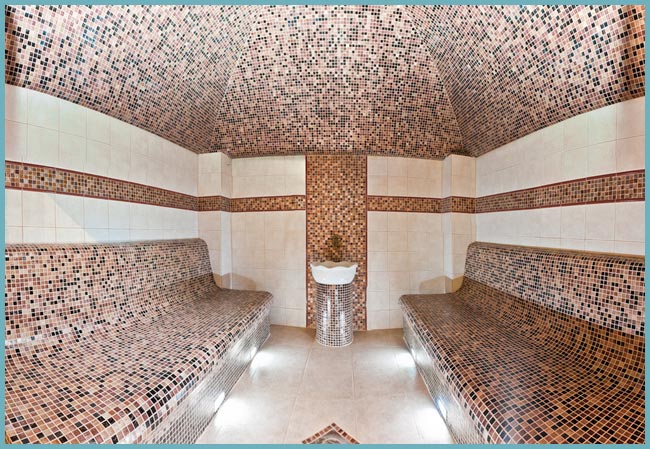
Turkish bath decoration - tiles or stone
Secondly, a traditional hammam must include four mandatory rooms: a harar - steam room, a shower, a relaxation area and a technical room. The latter should be as far as possible from the living rooms of the house.
Thirdly, the ceiling of the Turkish bath should have a dome shape. And this is explained not by respect for traditions, but by an absolutely practical approach: condensation will regularly collect on the surface of the ceiling, and the dome shape will allow moisture to flow down the walls rather than fall on those receiving the procedures.
Harm from visiting a Turkish bath
So, what in the hammam can have a negative effect on the body? It's all about the air temperature, 45°C, which is not low, and the highest air humidity - 100%. These two factors have their own pros and cons for your health.
Hot air is bad because it can lead to overheating of the human body. Moreover, heat coming from outside is less useful than internal heat:
The bad thing in itself is that the limbs get quite hot at a temperature of 45°C. But the most unsafe thing for any person is a fever in the head. That is why, at the slightest non-compliance with all the rules of steaming in baths, after the procedures many people begin to have a severe headache.
And that’s why in the Russian steam room it is customary to wear hats, and in the Eastern ones - a turban made of a towel, which many today neglect for the sake of a “beautiful appearance.”
The second point is excessively humid air. It is bad for the body because it further contributes to overheating. So, if a person has at least some problems with the cardiovascular system, a dangerous exacerbation will occur even at 85% air humidity.
But in fact, everything is dangerous only for an unhealthy body, with a weak heart and other problems. That is why there is such a thing as a contraindication.
Features of steam rooms from Russia
Steam is supplied to the hammam in a special way. Moreover, if we are talking about a real Turkish bath, then it should be equipped with several rooms. Each room has its own temperature. In the main hall it changes from the periphery to the center, so you can choose the appropriate sector and sit there.
Thanks to the high humidity, breathing in the hammam is pleasant and easy, even in a room that is heated to the highest temperature. The body warms up gradually, smoothly. And it's not just in the air. The hammam uses special beds made of marble. The stone heats up evenly and maintains the same temperature perfectly. When a person lies down on a marble bench, the whole body heats up equally, and the stone does not burn the skin, but gives extremely pleasant sensations.
The humidity in Russian baths is prohibitive. At temperatures of 50–70°C, humidity reaches 80%. For Russians, the main accessory for a steam room is a broom. As soon as you think about steam procedures, you immediately remember twig pats on the body. Some people use tied rods for their intended purpose, others steam the product and enjoy the pleasant aroma that spreads throughout the room.
In a Russian bath you can’t just lie down on a shelf and relax peacefully. Each steam session involves following the gang, lifting to disperse air accumulation, and sudden jumps into the ice hole. Russian bathhouse attendants are distinguished by the fact that they like to sharply shock their own body. In addition to the high air temperature, which puts intense pressure on the heart and blood vessels, constant movements also force the heart to work at an accelerated rate.
High humidity helps normalize the respiratory system. Many doctors prescribe a course of treatment in the steam room. The use of aromatic oils enhances the effect of hot steam on the body, reducing pain in arthritis and osteochondrosis.
For cleansing the skin, a Russian sauna is an indispensable option. The pores are completely cleaned in conditions of high humidity, the body covers acquire a healthy appearance, massage helps restore the tone and elasticity of the tissues.

